Leaf Plates
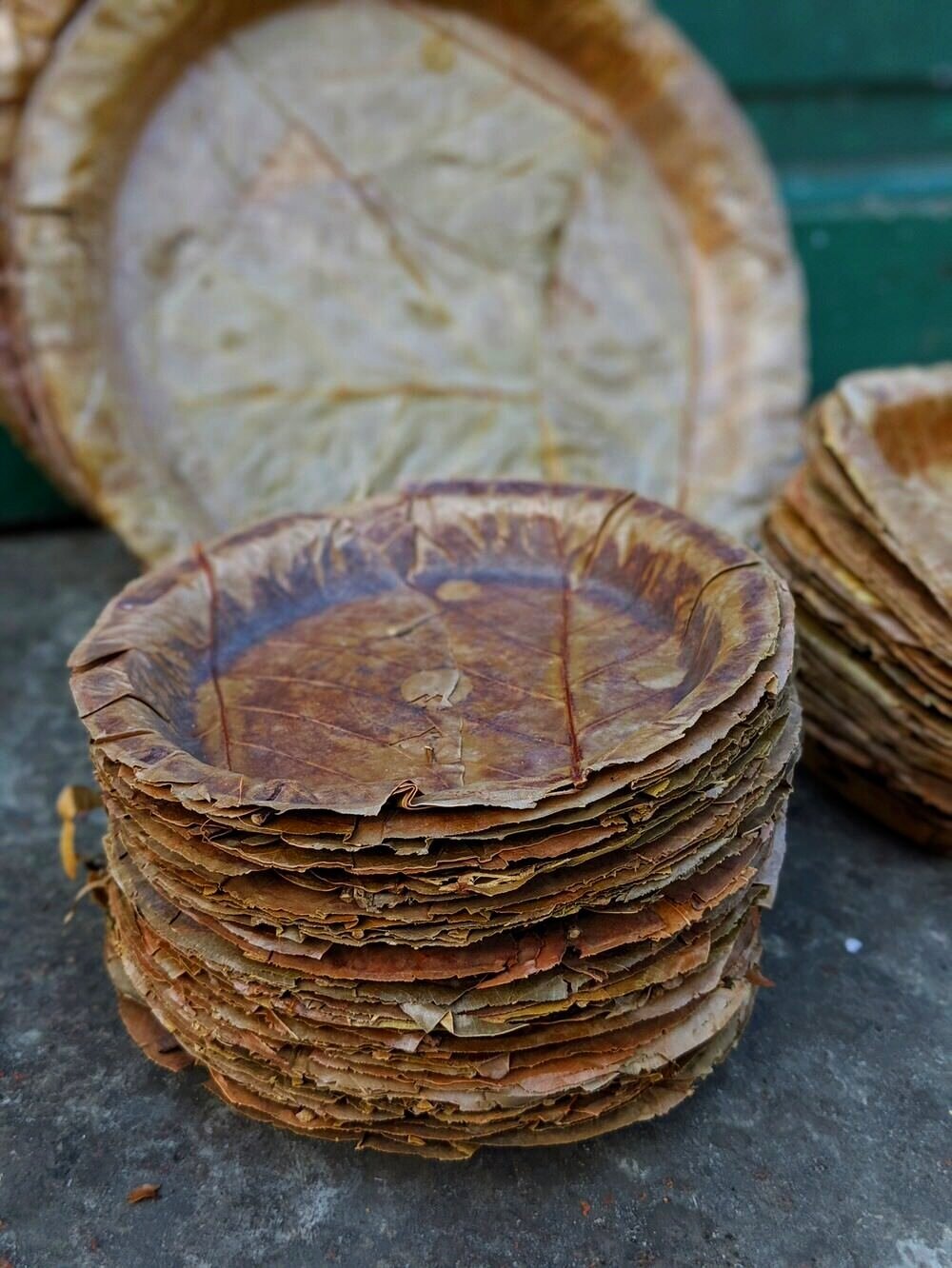
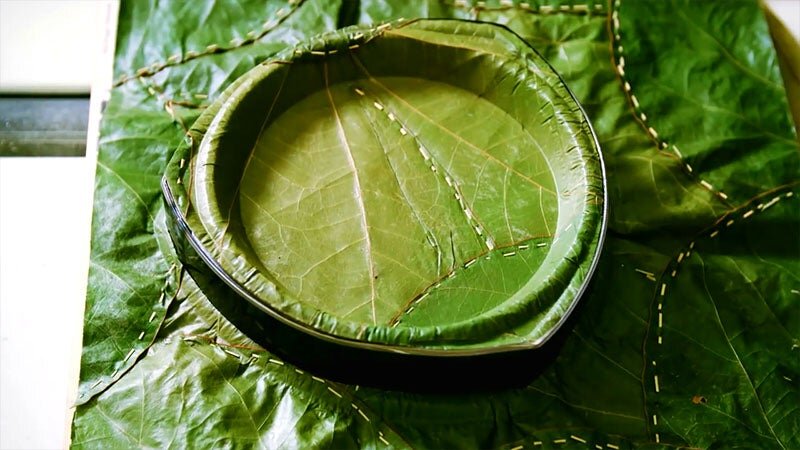
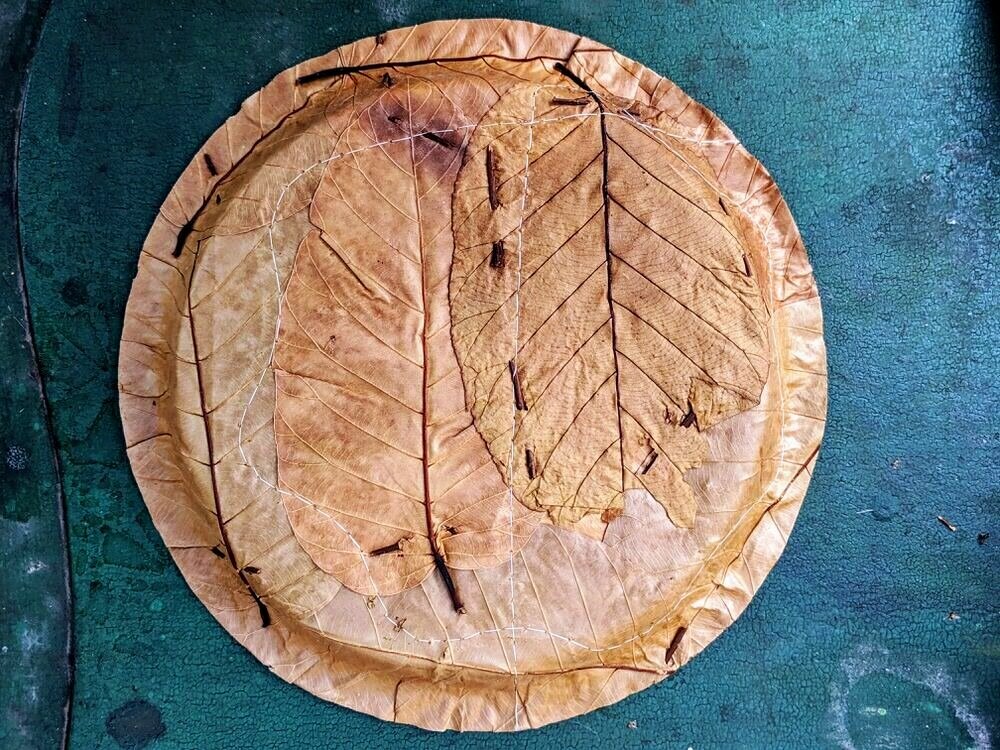
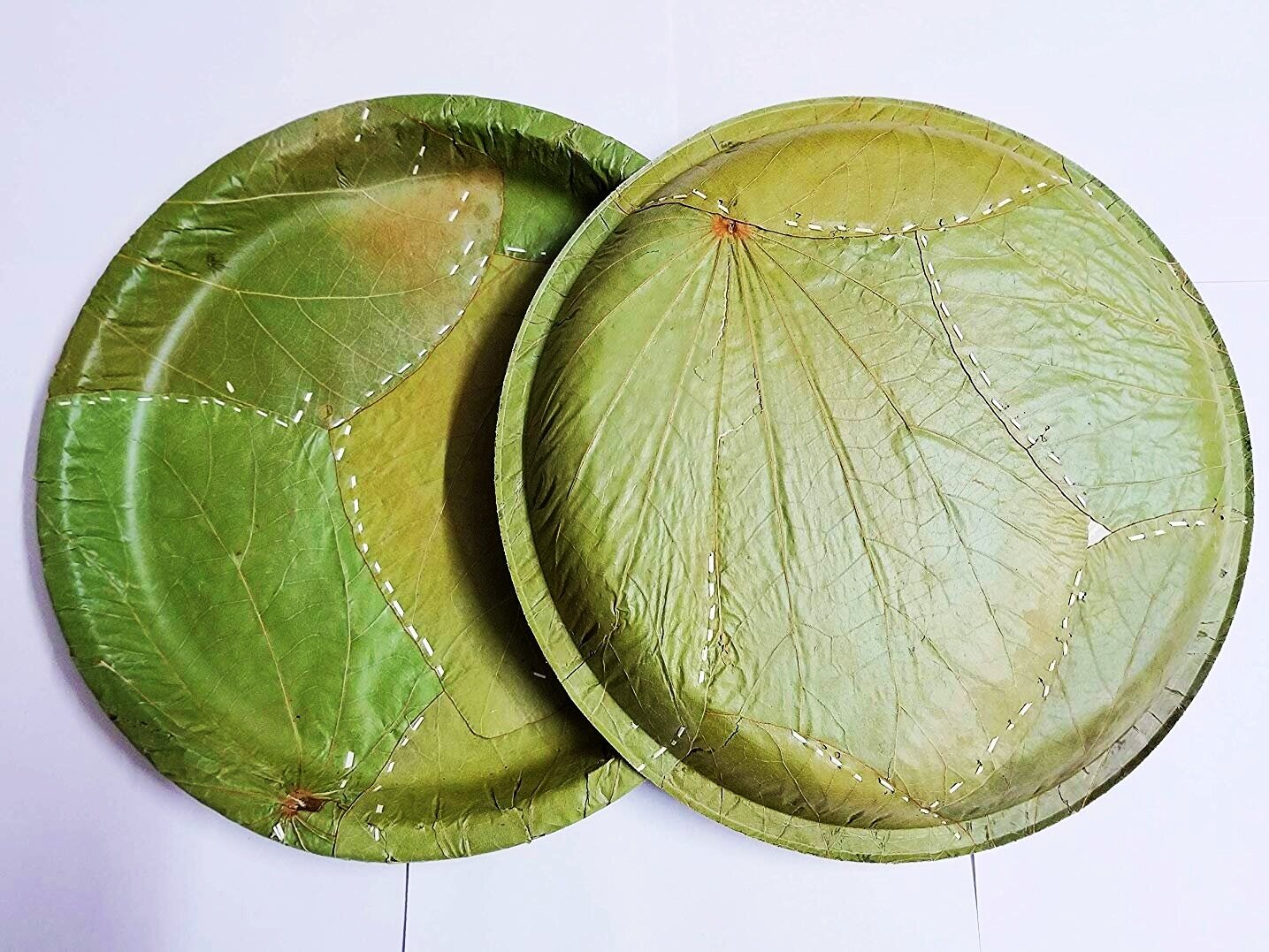
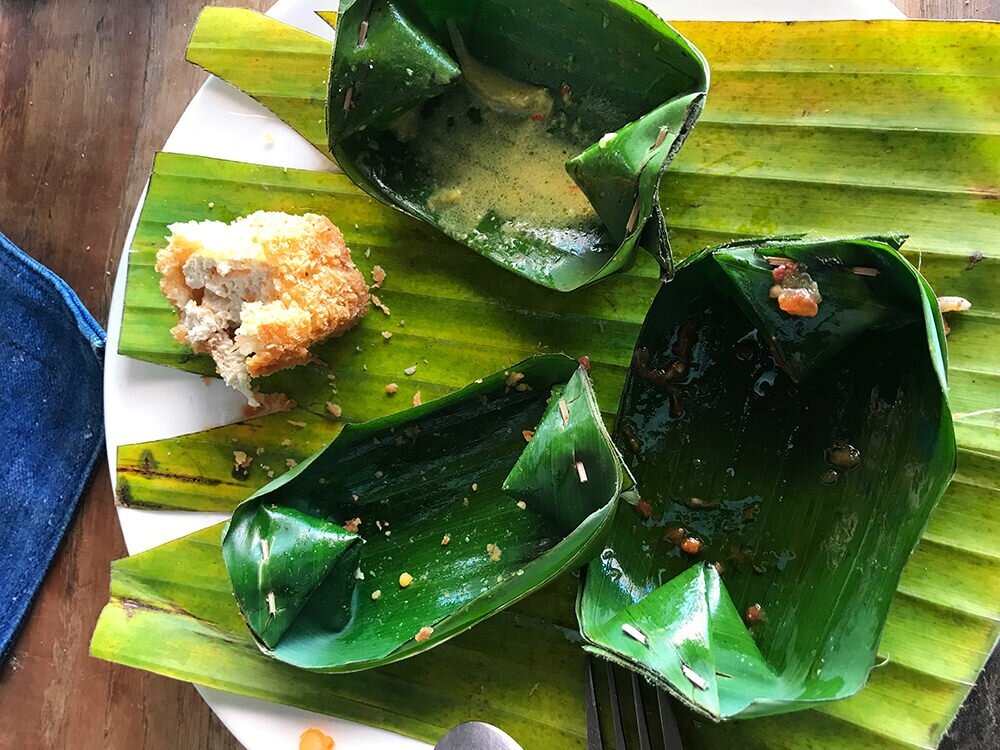
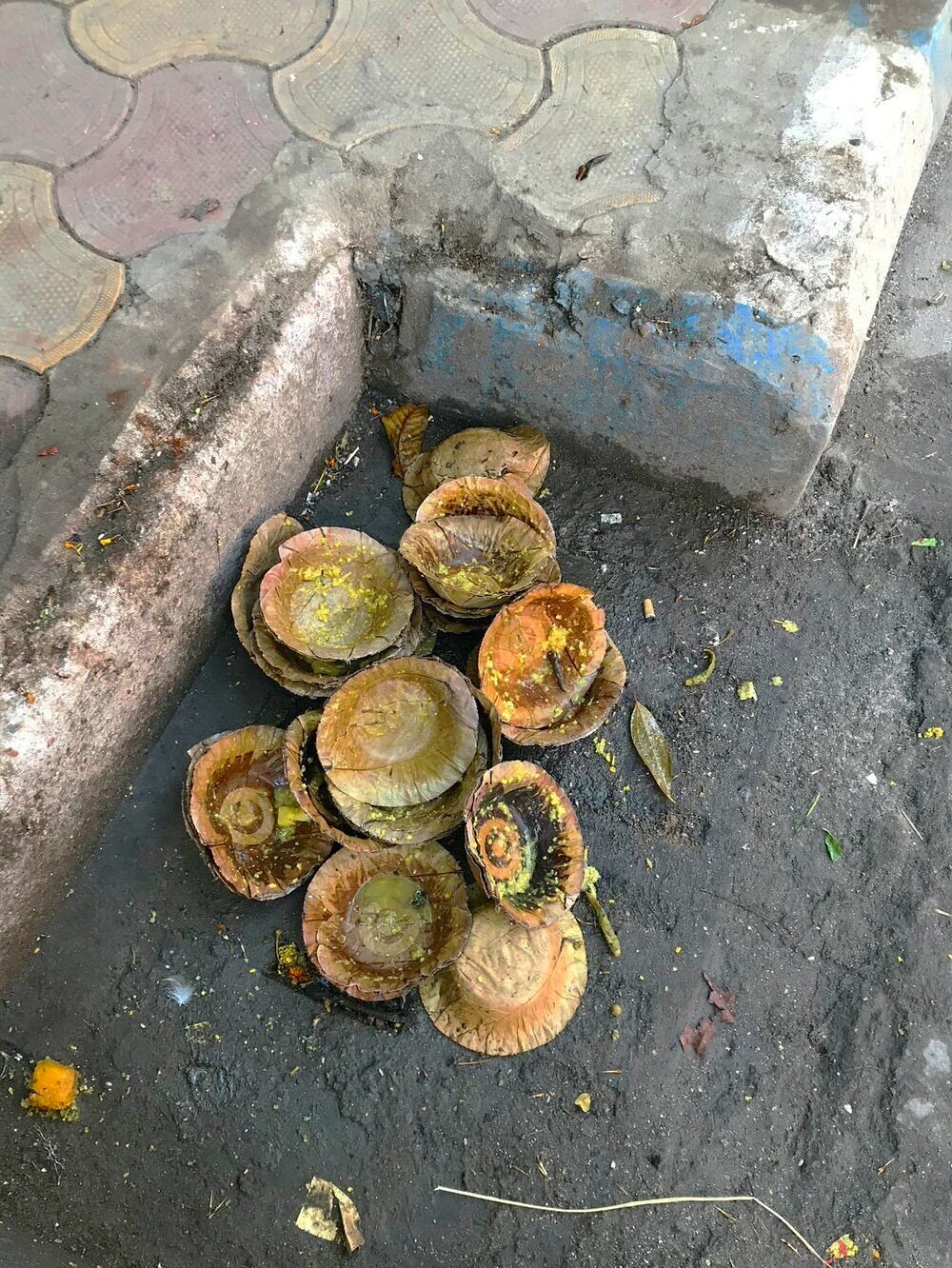
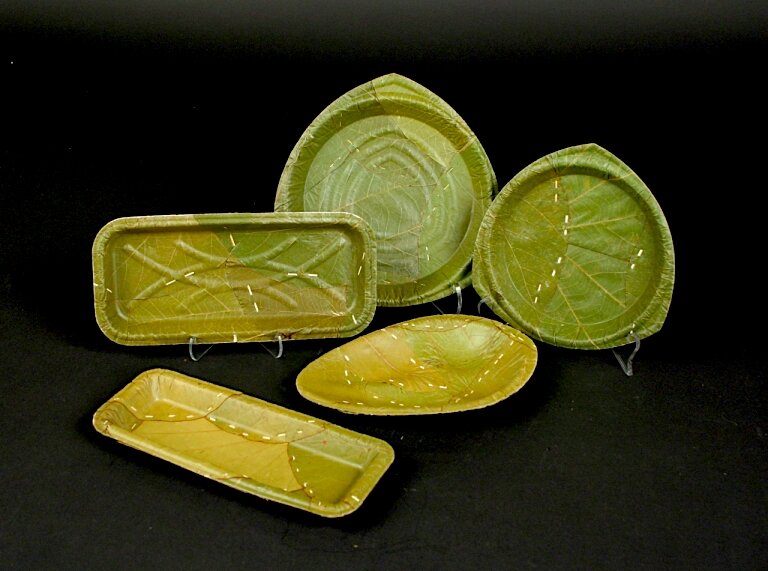
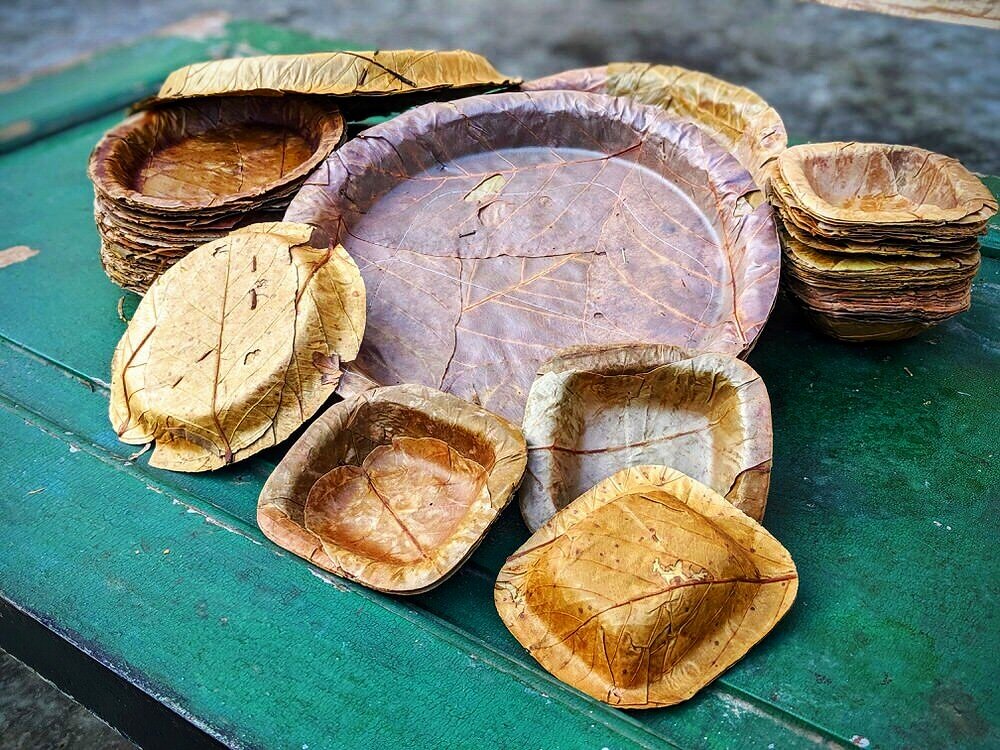
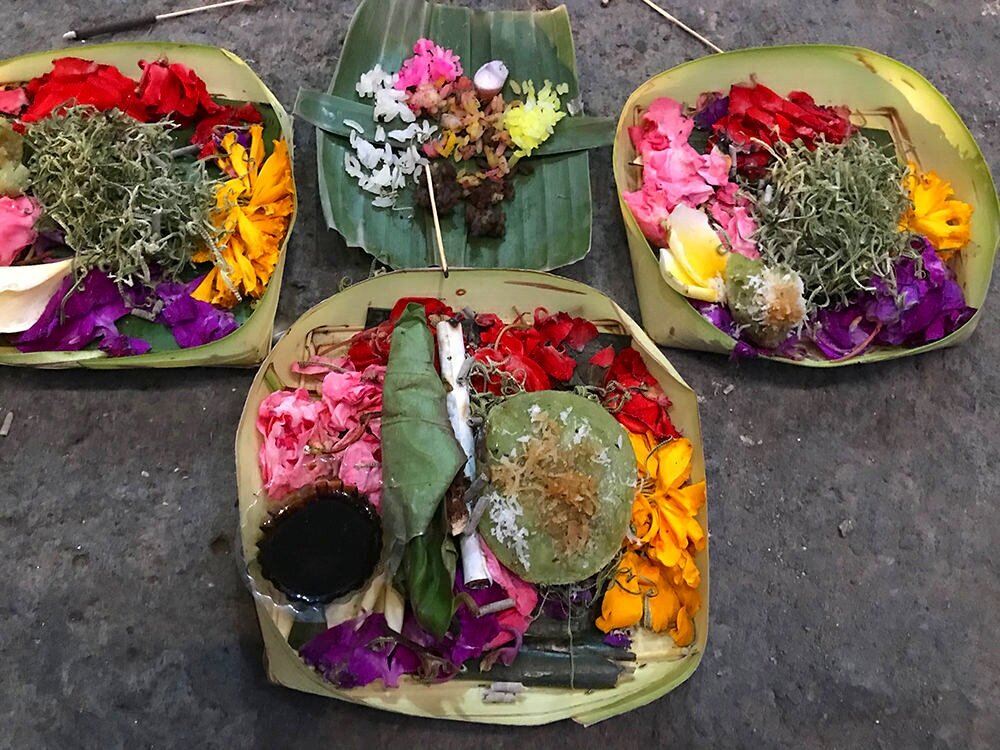
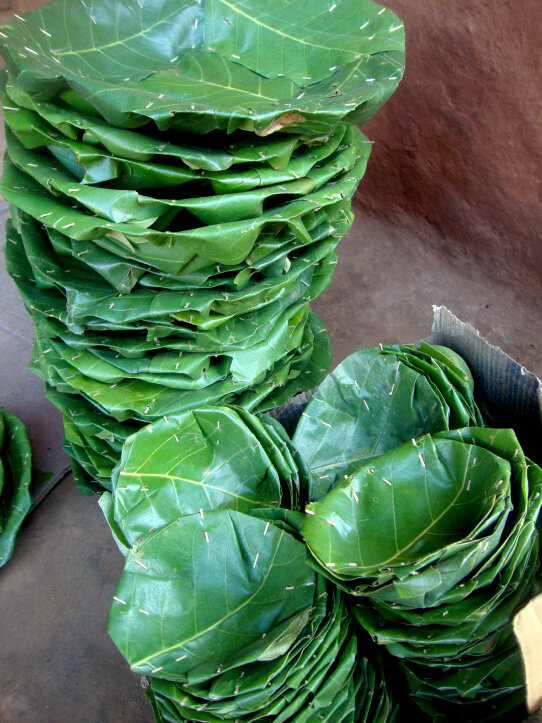
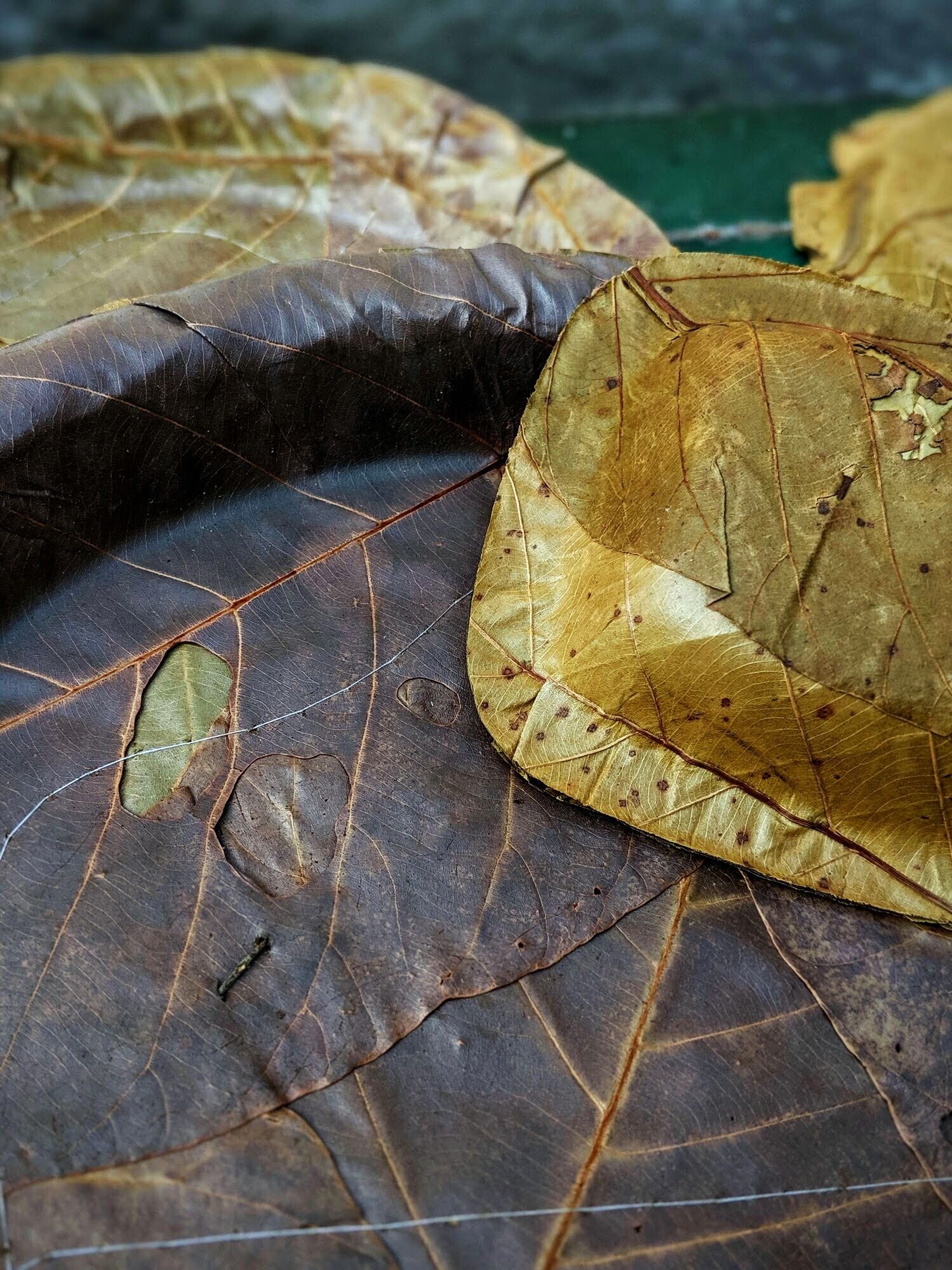

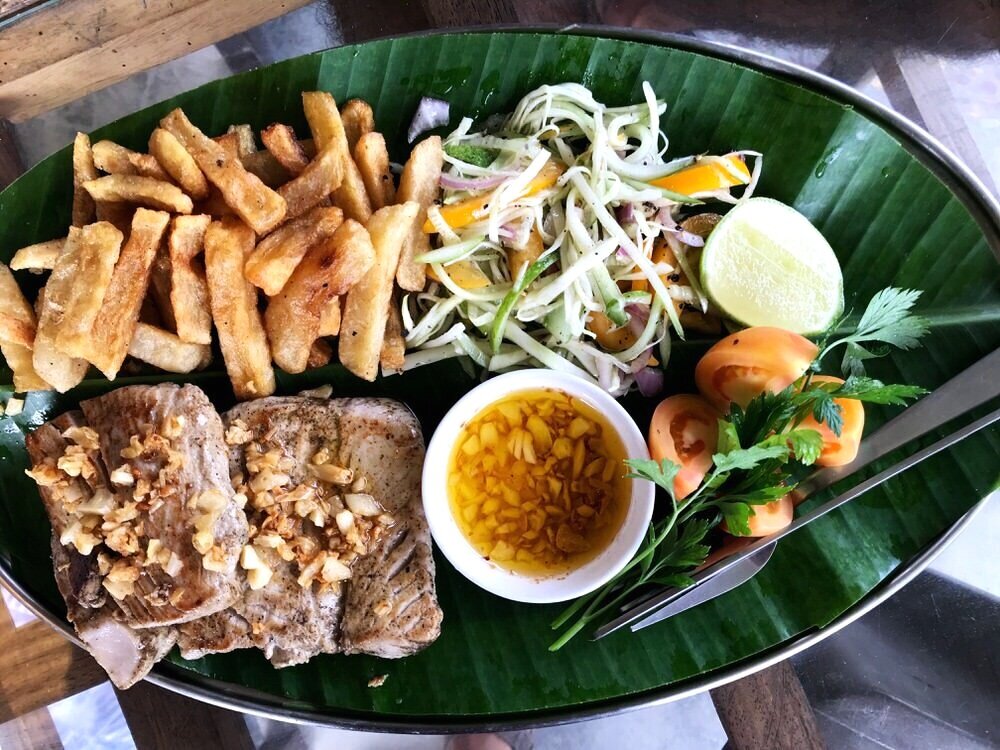
Leaf Plates have a long tradition in South Asia and recently gained popularity as eco-friendly alternatives for disposable takeaway and single-use dishes.
Apart from serving food, the fully biodegradable, water-resistant and compostable plates and vessels are still in use for religious rituals, community feasts, and ceremonies.
The plates are traditionally made from sustainably sourced leaves whose varieties differ from region to region. Individual leaves are joined with yarn or sticks by hand, or compressed into layers with a moulding machine without the need of synthetics, chemical binders, or glue.
While the demand for leaf plates sharply declined when plastic and styrofoam became popular, new research is boosting the ancient tradition of plate-making which is often in the hands of rural women collectives.
In some cases aluminium or plastic layers or a sheet of PE-coated kraft paper is used to reinforce the plates. Similarly to synthetic yarn, this defies the product’s eco-friendliness.
The plates made entirely from organic materials decompose in compost in less than a month.
Original Name(s) : Pattal, Patravali, Vistaraku (India); Tapari, Duna, Bota (Nepal)
Material : leaves (Sal, Siali, Betel, Areca, Palash, Banyan, Banana, Teak…); yarn, fiber or bamboo shavings, sometimes corrugated paper
Usage : serving food, takeaway, offerings
Cost : very low, starting from less than $0.05 per piece
Traditional Purpose : serving food, offerings
Life-cycle : disposable / recyclable / compostable
Durability : single-use
Shelf Live : approx. 18 months
Status : in-use
Food Safe : yes, depending on the material
Energy Usage : low
Production Effort : labor intensive (handmade), medium (machine made)
Region(s) of Origin : South Asia / Indonesia